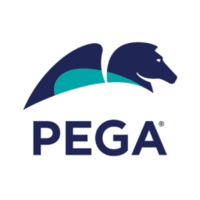Article by Josh Sultanik and Joan Du Triou
The project team has been assembled. The organization is on board. Everyone is excited at the prospect of building something new. Finally, a new system that will solve all the organization's staff and customer problems. So let’s hurry up and get started! Sound familiar?
It is all too easy to make the common mistake of focusing on technology as the solution before truly understanding the problem. Many changes can be made – but are they the right changes? Will the new technology make a material difference to the organization’s success, customer satisfaction, or staff productivity? Will the new system be lovable and widely adopted? These are the key questions that we need to ask before we start the work. This is where the definition of business outcomes is so important.
Defining business outcomes
Business outcomes are the guiding light that keeps us (IT and Business) on track to invest the time, effort, and money in addressing the right changes. To make it work, the business outcomes need to be well-defined with clear measurements. They also need to relate to the customer journey and associated business processes. If we cannot directly attribute the process change to the business outcome we are all at risk of missing the point. So how do we achieve this?
For starters, we work in collaboration with the end-users and their representatives to identify the customer journey. We need to dig further to understand the customer’s outcome and then we need to understand how that relates to the business outcome. It’s so easy in our enthusiasm to do new things, to forget who is important in the solution. The secret is, that in solving for the customer outcome, you increase the chances of achieving the business outcome. And by collaborating with the end-user to identify and define the customer’s outcome, you increase the chances of delivering a solution the customer will love.
From outcomes to microjourneys
So where do microjourneys come into this? It’s better to explain using an example.
Think about a healthcare setting. For simplicity, consider a business scenario in which patients fail to turn up for scheduled doctor or medical specialist appointments. From a patient’s perspective (the ‘customer’), the outcome is to resolve a medical issue and get well. Microjourneys are the interim goals the patient needs to achieve to get well and this includes working their way through the healthcare processes that allow them to make appointments, cancel and reschedule appointments, attend the appointments, receive medication, or be referred to specialists – to name a few.
From a business perspective, it costs a medical provider time and money when patients fail to turn up. It also impacts other patients that may be on a waiting list. Where’s the patient’s outcome may be to get well, the business outcome might be to increase efficiency, which could be measured as a 10% improvement in patient attendance rate.
Good. Now we have clarity. We know what we need to aim for from a business perspective, and because we have identified the customer journey we know where we need to start looking for opportunities to improve from a customer perspective. The next step is to crystalize that insight. Identify the microjourneys that influence the business outcome the most and prioritize them in order of impact.
With this lens, the project team and the business team will focus their efforts on the relevant microjourney(s) and build a solution to drive a change in patient behavior resulting in an increased likelihood of attendance. All in all, a win for the patient and a win for the organization.
At Pega our delivery approach, Pega Express, is designed to place the customer at the center of our solution design, to be focused on achieving the link between the customer and business outcomes, and to deliver the most important microjourney first.
Sizing the effort directly in Pega
So now that you have focused on end to end patient experience and prioritized the outcomes and microjourneys, you would like to size the project. Specifically, how much time, how much effort, and how many resources will it take to build your first release or Minimum Lovable Product (MLP) as well as future MLPs.
One way is to open up a spreadsheet tool, copy down all the microjourneys, personas, channels, data, etc, manipulate some formulas, adjust, and tweak to arrive at a number. You then pass that file to a few colleagues to review and make changes. Before you know it, you have 3 different versions sent back to you by 3 different reviewers. To make matters worse, while those reviews were being conducted the client asked for a few adjustments to the cancelation process. Now everything is out of sync and you need to go back to step one.
At Pega, we created a better and easier way to size your projects. Once you have identified the customer outcomes and microjourneys, capture that information directly in Pega’s no-code App Studio visual case designer (v 8.5+). Each microjourney is made up of 3 pillars:
- Case types, decisions, or automations are the main building blocks of your microjourney. We will create a case type for the booking process, another for the cancelation process, etc.
- Personas and the channels through which those personas engage the solution. Personas may include patients, guardians, caregivers, etc who may access the patient portal via the web or mobile channels.
- Data and the integrations that provide that data, including patient data needed to make an appointment and the integration to the secure backend system which stores that data.
Once you have captured these 3 pillars of information, you have both a visual representation of the microjourney workflow and all the information you need to generate a sizing or estimate. Adjust a few risk factors, click the calculate button, and your estimate appears. It is all on the Pega cloud, so anyone reviewing it will see the same thing. If your client requests any modifications, just capture those and recalculate. It is all very simple and straightforward, directly in Pega. No need to use any external tools.
The advantages do not end here. Not only do you have an estimate tied directly to your microjourneys with full traceability, but you also have a foundation for your project team to expand on. By capturing the 3 pillars of a microjourney in Pega’s no-code App Studio visual case designer you have laid the groundwork for the project team. You have ensured that the project team starts building at the point where the sales team has left off. Thereby reducing gaps in information that are so common at many organizations that have separate teams for sales and delivery. You have created a consistent thread of knowledge that flows from sales to delivery empowering your project team to build and deliver outcomes that your customers will love.
So back to our title – what’s love got to do with it? Tina Turner will tell you that it is just a second-hand emotion. But at Pega, love, or more precisely, lovability is the ultimate driver behind how we design, build and deliver business outcomes and microjourneys. We focus on those business outcomes and customer microjourneys that will move the needle and elicit a real emotional response. Because, products that customers love are products that customers use and adopt – the ultimate sign of success.
Do you have a question about microjourneys, or about any other element of the Discover Phase of the Pega Express Delivery Approach? Join me and Glen Finch on Collaboration Center for our Discover Phase Ask the Expert session on Collaboration Center this week (March 1 - March 8, 2021)
Recommended Resources
- Creating a microjourney for customer success
- Pega Express Delivery Approach on Pega Community
- Pega Express Delivery Mission on Pega University
Don't Forget
- JOIN THE CONVERSATION on Collaboration Center
- FOLLOW @PegaDeveloper on Twitter
- SUBSCRIBE to the Pega Developer Podcast on Spotify or via RSS


